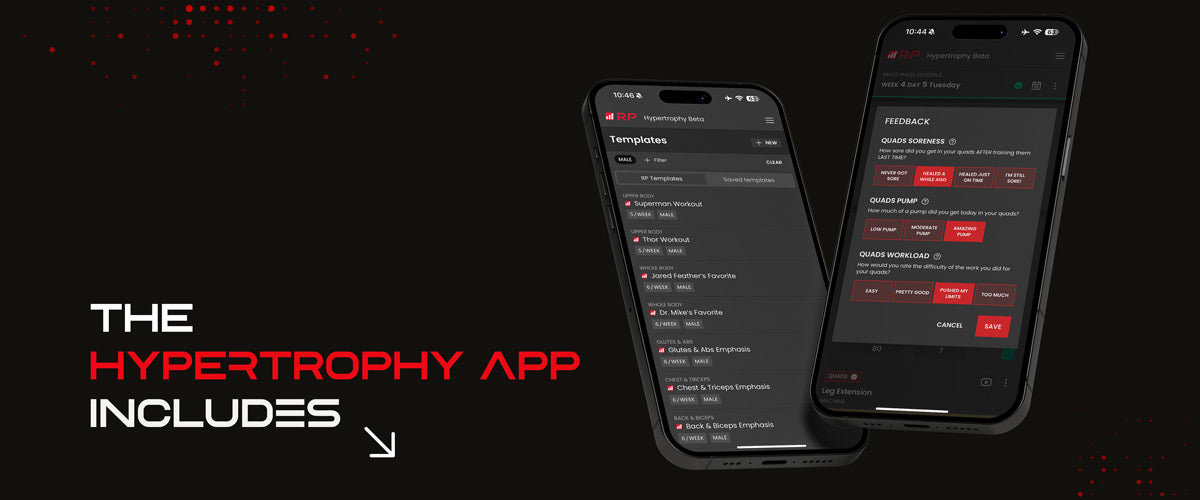
What Does It *Really* Mean to Train Hard?
In the world of strength and hypertrophy training, everyone wants to believe they train hard. But what does that actually mean? Is it screaming through a set of squats? Failing on rep 11 of a biceps curl? Or does it go deeper than that?
This article breaks down five dimensions of what it means to train hard — not just in the moment, but over the long haul. Whether you're an aspiring bodybuilder, a dedicated gym rat, or just someone trying to optimize your workouts, understanding these five pillars will sharpen how you think about effort, progress, and real intensity in training.
TL;DR
- Load: Heavy weight is hard in its own way — especially when pushing your limits.
- Relative Effort: Training near failure (low RIR) is key for muscle growth.
- Volume: One brutal set is fine, but multiple hard sets? That’s the real grind.
- Accumulation: Can you train hard for weeks on end before deloading? That counts.
- Consistency: True hard training shows up week after week, year after year.
1. Heavy Load: The Psychological and Physical Toll
Training hard can start with load — using weights that are near your max. If you’re grinding out sets of 5 or less, even with good form, you’re tapping into serious neurological and muscular demand. It’s not just the weight; it’s the mental prep, the full-body tension, and the risk factor. That’s why loading up your 3-rep max, even for a single, can be exhausting.
But that’s just one flavor of “hard.” It’s intense — but brief.
2. Relative Effort: How Close to Failure Are You?
This is the classic gym metric of "training hard." Are you stopping your sets with 3 reps in reserve (RIR)? Two? None? Going close to failure is a defining element of effort. High RIR means low stimulus. Low RIR means discomfort, grit, and gains. It doesn’t matter whether the weight is heavy or light — if you’re pushing to the limit, your muscles know it.
But one maxed-out set doesn’t define a program. That brings us to volume.
3. Volume: Can You Stack Hard Sets?
Doing one set to failure? That’s cute. Doing six sets close to failure — across multiple exercises — is a whole different beast. Real training volume isn’t just about total reps; it’s about accumulating quality work. That means hard sets with low RIR, done again and again. The physical toll adds up. So does the psychological fatigue. And so do the results.
Hard training is cumulative. You don’t get jacked from one legendary leg press video — it’s what you do every session that counts.
4. Accumulation: Training Hard Over Weeks, Not Days
Anyone can push hard for a single workout. But how long can you sustain it? Accumulation means building week-over-week training without burning out. If you can make it 4–6 weeks before needing a deload, you’re likely balancing effort and volume well. If you need a break after two weeks — or never need one at all — your volume or effort may be off.
Hard training means training hard and recovering smart. Otherwise, your results won’t last.
5. Consistency: The Hardest Form of Hard
The most underrated — and arguably most important — aspect of hard training is consistency. Are you showing up month after month, year after year, still putting in meaningful effort? The bodybuilders and strength athletes we admire didn’t just grind for 8 weeks. They’ve done it for decades.
This is what separates lifters who look like they lift… from those who just train hard for a summer.
Final Thoughts
Training hard isn’t just a feeling. It’s a multifaceted concept that spans intensity, volume, planning, and longevity. You don’t need to max out every variable at once — and you shouldn’t. But understanding all five of these levers can help you train smarter, push harder, and make progress that actually sticks.
So next time someone says, “I train hard,” ask: in which ways?
